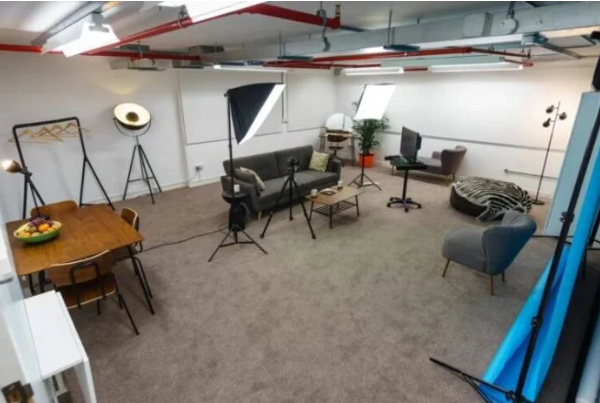Introduction to Back Casting Room
Welcome to the fascinating world of back casting rooms! Have you ever wondered how intricate metal objects are created with such precision? Back casting is a technique that has been used for centuries to produce detailed castings with remarkable accuracy. In this blog post, we will delve into the history of back casting, explore the benefits of using a back casting room, learn about the process and materials involved, and discover tips for creating flawless molds. Get ready to unlock the secrets behind this age-old method of crafting beautiful objects!
History of the Technique
The history of the back casting technique dates back to ancient times when artisans used this method to create intricate metal castings. Originally developed as a way to replicate detailed designs, back casting has evolved over centuries into a modern and versatile process.
Throughout history, craftsmen have utilized various materials and tools to perfect their castings, constantly refining the technique along the way. From bronze sculptures in ancient Greece to ornate jewelry in medieval Europe, back casting has been a fundamental aspect of artistic expression across cultures.
As technology advanced, so did the capabilities of back casting, allowing for more precise and complex creations. Today, artists and designers continue to push boundaries with innovative uses of this traditional technique, blending old-world craftsmanship with contemporary aesthetics.
By understanding the rich history behind back casting room practice…
Benefits of Using a Back Casting Room
Using a back casting room offers a range of benefits that make it an attractive option for creating detailed and high-quality castings. One of the main advantages is the ability to capture intricate details accurately, allowing for precise reproduction of shapes and textures. This makes back casting ideal for replicating delicate objects or creating custom designs with precision.
Additionally, utilizing a back casting room provides flexibility in material choices, giving you the freedom to experiment with different types of resins, metals, or other materials depending on your project requirements. The controlled environment offered by a dedicated casting space ensures consistency in results and minimizes external factors that could impact the quality of your castings.
Furthermore, having access to a dedicated back casting room saves time and effort compared to traditional methods, streamlining the process from mold-making to finishing touches. This efficiency translates into faster turnaround times without compromising on the quality of your final product.
The Process of Back Casting
The process of back casting involves creating a mold from an existing object or model. This technique allows for the reproduction of intricate details and textures.
First, prepare your workspace by ensuring it is clean and well-ventilated. Next, mix the molding material according to the manufacturer’s instructions.
Carefully pour the mixture over your object, making sure to eliminate any bubbles that may form. Allow the mold to cure completely before removing the original object.
Once you have your mold, you can then fill it with casting material of your choice. Again, follow the instructions provided for mixing and pouring.
After allowing sufficient time for curing, carefully remove your casting from the mold. You may need to trim any excess material or smooth out rough edges.
With practice and attention to detail, you can create beautiful replicas using the back casting technique!
Materials and Equipment Needed for Back Casting
When it comes to back casting, having the right materials and equipment is crucial for creating successful castings. One essential item you’ll need is a high-quality silicone mold-making material that can capture intricate details accurately.
Additionally, you’ll require a release agent to ensure your casting easily separates from the mold without any damage. This will help prolong the life of your molds and make the demolding process smoother.
Investing in a good quality resin or plaster for your castings is also important as it will determine the final look and durability of your pieces. Make sure to choose a material that suits your project’s requirements.
Other necessary tools include mixing cups, stirring sticks, measuring spoons, and disposable gloves to help you prepare and handle the casting materials safely. Having these supplies on hand will streamline the casting process and help you achieve professional results every time.
Tips for Creating the Perfect Mold
When it comes to creating the perfect mold in a back casting room, attention to detail is key. Start by ensuring your workspace is clean and organized before beginning the process. This will help prevent any debris from affecting the quality of your mold.
Choose the right type of material for your mold based on the object you are casting. Different materials have different properties that can impact the final result. Make sure to follow manufacturer instructions carefully when mixing and pouring your chosen molding material.
Take your time when pouring the material into the mold to avoid air bubbles or uneven surfaces. Using a vibrating table or gently tapping the sides of the mold can help release trapped air for a smoother finish.
Allow ample time for the mold to set properly before demolding. Rushing this step can lead to distortion or damage to your casting. Once demolded, handle with care and follow any additional curing instructions provided by the manufacturer for best results.
How to Use Your Castings
Once you have your castings ready, it’s time to put them to use! Whether you’ve created decorative pieces, jewelry, or keepsakes, the possibilities are endless. To display your castings, consider incorporating them into art projects, DIY home decor items, or custom gifts for friends and family.
If you’ve made jewelry with your castings, try pairing them with complementary pieces to create a unique and eye-catching ensemble. Experiment with different styles and materials to express your personal flair through your accessories.
For home decor applications, consider using your castings as accents on photo frames, vases, or candle holders. The addition of these personalized touches can instantly elevate the look of any room in your house.
Remember that each casting is a reflection of your creativity and skill. Embrace the process of experimenting and discovering new ways to incorporate your creations into everyday life – the results may surprise you!
Common Mistakes to Avoid
When working with back casting, there are a few common mistakes that beginners often make. One of the most frequent errors is not properly preparing the mold before pouring in the casting material. This can result in air bubbles or imperfections in your final piece.
Another mistake to avoid is rushing the curing process. It’s important to allow enough time for your castings to fully set and cure before removing them from the mold. Otherwise, they may not hold their shape or strength.
Using incorrect proportions of casting materials can also lead to subpar results. Be sure to follow instructions carefully and measure accurately when mixing your materials together.
Forgetting to wear protective gear like gloves and goggles while working with casting materials can be dangerous. Always prioritize safety when working on any project involving chemicals or hot materials.
By being mindful of these common mistakes and taking proper precautions, you can achieve successful results with your back casting projects.
Alternative Methods for Creating Castings
Looking for alternative methods for creating castings besides using a back casting room? One option to consider is sand casting, a traditional technique that involves pouring molten metal into a sand mold. This method allows for intricate designs and can be more cost-effective than other processes.
Another alternative is investment casting, which uses wax patterns coated in ceramic to create detailed and precise castings. This method is ideal for producing small, complex parts with high accuracy.
If you’re looking for a more modern approach, 3D printing can also be used to create castings by printing patterns that are then used to make molds. This method offers great flexibility in design and short lead times.
Each of these alternative methods has its own advantages and limitations, so it’s essential to choose the one that best suits your project requirements.
Final Thoughts and Recommendations
A back casting room is a valuable tool for creating detailed and unique castings. By following the process outlined in this article and using the right materials and equipment, you can create stunning pieces that will impress your clients or enhance your own projects. Remember to take your time when creating the mold, as attention to detail will ensure a successful casting every time.
Whether you are a seasoned professional or just starting out with casting, incorporating a back casting room into your workflow can open up new possibilities for creativity and craftsmanship. Experiment with different techniques and materials to see what works best for your specific needs.
Investing in a back casting room can elevate the quality of your work and set you apart from others in the industry. So don’t hesitate to explore this technique further and unleash your artistic potential through back casting. Happy crafting!







